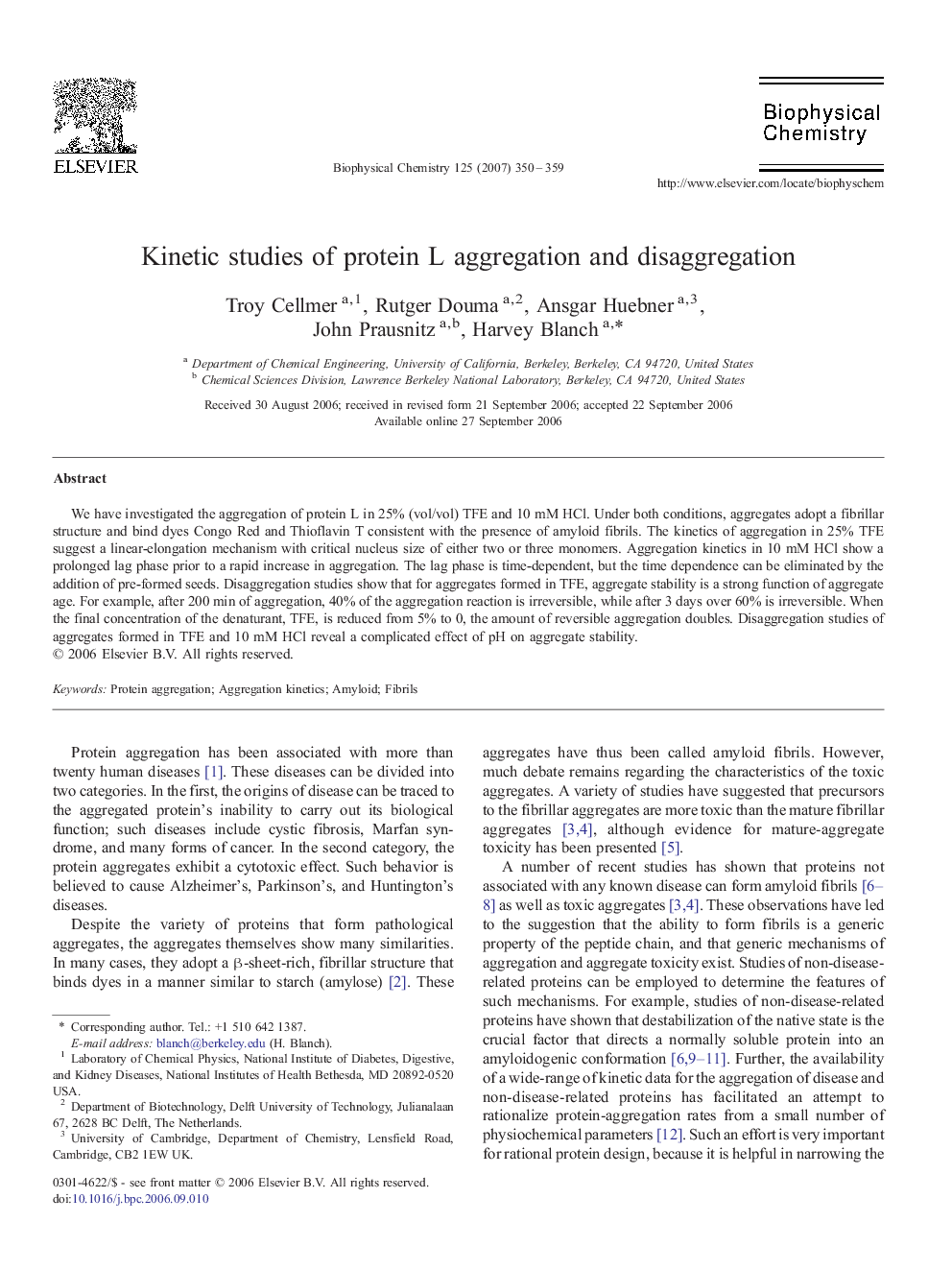| Article ID | Journal | Published Year | Pages | File Type |
|---|---|---|---|---|
| 5372288 | Biophysical Chemistry | 2007 | 10 Pages |
Abstract
We have investigated the aggregation of protein L in 25% (vol/vol) TFE and 10Â mM HCl. Under both conditions, aggregates adopt a fibrillar structure and bind dyes Congo Red and Thioflavin T consistent with the presence of amyloid fibrils. The kinetics of aggregation in 25% TFE suggest a linear-elongation mechanism with critical nucleus size of either two or three monomers. Aggregation kinetics in 10Â mM HCl show a prolonged lag phase prior to a rapid increase in aggregation. The lag phase is time-dependent, but the time dependence can be eliminated by the addition of pre-formed seeds. Disaggregation studies show that for aggregates formed in TFE, aggregate stability is a strong function of aggregate age. For example, after 200Â min of aggregation, 40% of the aggregation reaction is irreversible, while after 3Â days over 60% is irreversible. When the final concentration of the denaturant, TFE, is reduced from 5% to 0, the amount of reversible aggregation doubles. Disaggregation studies of aggregates formed in TFE and 10Â mM HCl reveal a complicated effect of pH on aggregate stability.
Related Topics
Physical Sciences and Engineering
Chemistry
Physical and Theoretical Chemistry
Authors
Troy Cellmer, Rutger Douma, Ansgar Huebner, John Prausnitz, Harvey Blanch,
